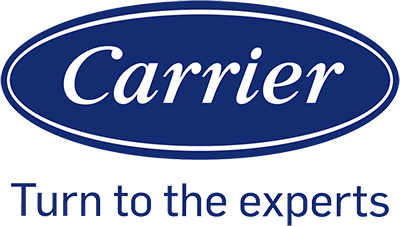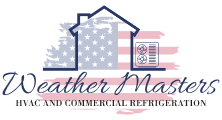Dirty air ducts do more than collect dust-they make our heating and cooling systems work harder. When ducts get clogged, airflow slows down, energy use goes up, and utility bills increase. That means money leaves our pockets every month without us even realizing why.
We often focus on the thermostat or the age of the system when costs rise, but duct condition plays a big role too. Leaks, blockages, and buildup inside ducts force equipment to run longer than it should. Over time, this not only wastes energy but also shortens the life of our system.
By understanding how dirty ducts affect both energy use and air quality, we can take simple steps to maintain cleaner air and lower bills. This article will break down the impact on costs, explain the health concerns, and share practical strategies to prevent the problem.
How Dirty Ducts Waste Energy and Drive Up Utility Costs

Dirty ductwork reduces airflow, forces the HVAC system to work harder, and often causes uneven heating or cooling in different rooms. These issues increase energy use and lead to higher utility bills over time.
The Link Between Dirty Ducts and High Energy Bills
When dust, dirt, and debris build up inside air ducts, the HVAC system uses more power to move air through the ductwork. This extra effort directly increases energy consumption.
We often see that dirty air ducts make furnaces and air conditioners cycle longer than they should. Longer cycles mean higher energy bills month after month.
A clean system can move air efficiently, but dirty ductwork blocks that efficiency. Even a small buildup can reduce airflow and cause noticeable changes in energy use.
Key points that affect costs:
- More fan run time
- Longer heating or cooling cycles
- Increased electricity and gas use
By keeping ducts clean, we can lower wasted energy and reduce the amount we spend on utilities.
Airflow Restrictions and HVAC System Strain
When ducts clog with dust, pet hair, or other debris, airflow slows down. Restricted airflow makes the HVAC system push harder to deliver the same amount of conditioned air.
This strain shortens the life of parts like the blower motor and increases the chance of breakdowns. Repairs and replacements add to the financial impact already caused by higher energy bills.
We also notice that restricted airflow prevents the system from reaching the set temperature quickly. This forces the unit to run longer, which wastes more energy.
Common signs of airflow restrictions include:
- Weak air from vents
- Rooms taking longer to heat or cool
- Higher monthly utility costs
Addressing dirty ductwork reduces strain on the HVAC system and helps it operate at normal efficiency.
Uneven Heating and Cooling as a Result of Dirty Ducts
Dirty ducts often cause some rooms to feel warmer or cooler than others. Blockages in the ductwork prevent even air distribution throughout the home.
When this happens, we may raise or lower the thermostat to make one room comfortable. That adjustment forces the HVAC system to use more energy than needed.
Uneven heating and cooling also reduce overall comfort. Instead of balanced temperatures, we end up with hot spots and cold spots.
Effects of uneven airflow:
- Higher thermostat settings to compensate
- Extra energy use from longer system cycles
- Noticeable differences in comfort between rooms
By cleaning dirty air ducts, we allow air to flow evenly and reduce the energy wasted on constant thermostat adjustments.
Health and Air Quality Impacts of Dirty Ducts
When dust and debris build up in ducts, the air we breathe indoors can carry more particles and irritants. These conditions may trigger allergies, worsen asthma, and spread mold spores throughout our living spaces.
Indoor Air Quality and Health Risks
Dirty ducts reduce indoor air quality by circulating particles that should be filtered out. We may notice more sneezing, coughing, or eye irritation in homes with clogged or unclean ducts. People with asthma often feel stronger symptoms when breathing in air filled with irritants.
Children and older adults face higher risks because their lungs are more sensitive. Poor indoor air quality can also affect sleep and cause headaches.
Key health concerns linked to dirty ducts include:
- Increased asthma flare-ups
- More frequent allergy symptoms
- Irritated eyes, throat, and nose
- Greater discomfort for people with respiratory conditions
By keeping ducts clean, we limit the spread of these particles and make the air safer to breathe.
Common Contaminants: Dust, Pet Dander, and Pollen
Dust, pet dander, and pollen are the most common contaminants found in ductwork. These particles collect on duct surfaces and then move into our rooms when the system runs.
Dust often contains a mix of dead skin cells, fibers, and dirt. Pet dander comes from skin flakes and hair that shed from cats, dogs, and other animals. Pollen enters through open windows and doors, then settles in ducts where it spreads through the air system.
| Contaminant | Source | Possible Effect |
|---|---|---|
| Dust | Skin cells, fibers, dirt | Sneezing, coughing |
| Pet Dander | Cats, dogs, other pets | Allergy flare-ups |
| Pollen | Trees, grass, flowers | Seasonal allergy symptoms |
When these particles circulate, they make allergy control harder. Regular duct cleaning helps reduce the buildup and lowers daily exposure.
Mold Spores and Allergies in Ductwork
Moisture inside ducts creates a setting where mold spores can grow. Once mold develops, the spores travel through the air system and spread across the home.
Breathing mold spores can trigger allergies and worsen asthma attacks. Some people may also experience sinus congestion, skin irritation, or coughing. Those with weak immune systems are especially vulnerable.
Mold often grows in areas with condensation, such as near cooling coils or in damp basements. If we notice musty odors, it may be a sign of mold in the ducts.
The best way to reduce mold risk is to control moisture and schedule inspections. Using dehumidifiers and fixing leaks can keep the ducts dry and less likely to support mold growth.
Maintenance, Cleaning, and Prevention Strategies
We can lower energy waste and improve indoor air quality by keeping ducts clean, scheduling regular service, and following industry standards. Professional cleaning, proper timing, and attention to dryer vents all play a role in reducing utility costs and preventing future problems.
Benefits of Professional Air Duct Cleaning
When we hire a professional duct cleaning service, we remove dust, dirt, and buildup that block airflow. This helps our HVAC system run more efficiently and reduces the strain on motors and fans. Cleaner ducts also mean fewer allergens and less debris circulating in our home.
A professional air duct cleaning often includes the use of specialized brushes, vacuums, and blowers. These tools reach areas we cannot access ourselves. By using the right equipment, technicians can clean the system without damaging the ductwork.
We also gain peace of mind knowing the work meets safety and health standards. A thorough cleaning may even extend the life of our HVAC system by preventing overheating and wear caused by restricted airflow.
Key benefits include:
- Better airflow and efficiency
- Lower utility costs
- Reduced dust and allergens
- Longer HVAC lifespan
How Often to Schedule Duct Cleaning
We should not treat duct cleaning as a one-time task. Instead, it works best as part of a regular maintenance plan. The National Air Duct Cleaners Association (NADCA) suggests having ducts inspected every two years and cleaned every three to five years.
The exact timing depends on our situation. Homes with pets, smokers, or recent renovations may need more frequent cleaning. If we notice visible dust around vents, musty odors, or uneven airflow, it may be time to schedule a service sooner.
We can also ask our HVAC technician to check for buildup during seasonal maintenance visits. This helps us decide if a cleaning is necessary before problems increase energy costs.
The Role of NADCA and Industry Standards
The National Air Duct Cleaners Association (NADCA) sets standards for proper duct cleaning. When we choose a NADCA-certified provider, we know the service follows guidelines for safety, equipment, and cleaning methods.
NADCA members must follow the ACR Standard, which outlines how to inspect, clean, and restore HVAC systems. This ensures that the work removes contaminants without causing damage.
By hiring a company that follows NADCA standards, we reduce the risk of incomplete or poor-quality service. We also gain confidence that the cleaning will improve system efficiency and indoor air quality.
Dryer Vent Cleaning and Additional Services
Dryer vent cleaning is another service that helps us save energy and improve safety. Lint buildup in dryer vents restricts airflow, making the dryer work harder and use more electricity. In some cases, clogged vents can even become a fire hazard.
Professional dryer vent cleaning removes this buildup and restores proper airflow. This shortens drying times, reduces wear on the appliance, and lowers energy use. Many duct cleaning companies offer this service along with air duct cleaning.
Some providers also offer coil cleaning, filter replacement, and full HVAC inspections. These extra services add value by keeping the entire system running efficiently. When we combine duct cleaning with dryer vent cleaning, we reduce waste and protect our home at the same time.




